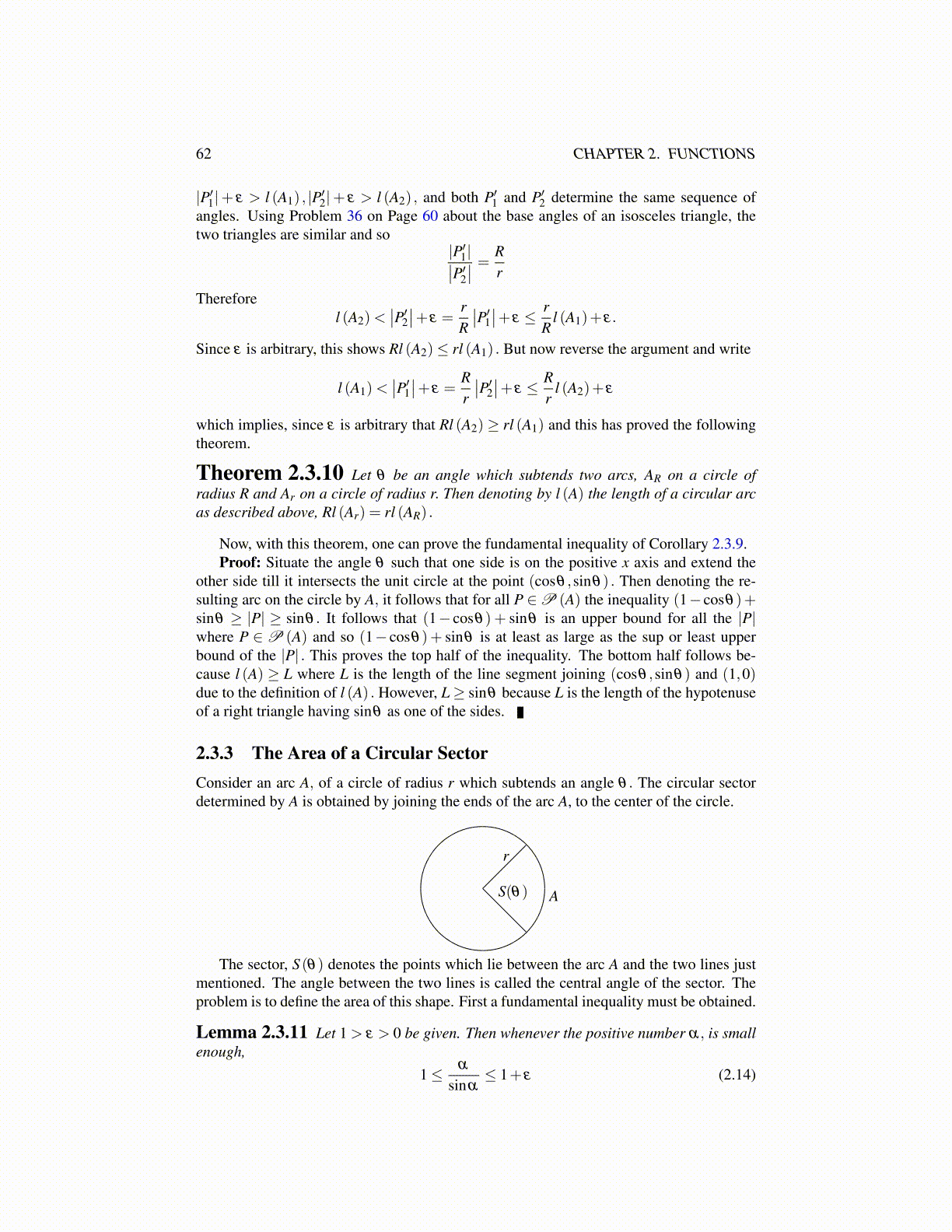
62 CHAPTER 2. FUNCTIONS
|P′1|+ ε > l (A1) , |P′
2|+ ε > l (A2) , and both P′1 and P′
2 determine the same sequence ofangles. Using Problem 36 on Page 68 about the base angles of an isosceles triangle, thetwo triangles are similar and so
|P′1|∣∣P′2
∣∣ = Rr
Thereforel (A2)<
∣∣P′2∣∣+ ε =
rR
∣∣P′1∣∣+ ε ≤ r
Rl (A1)+ ε.
Since ε is arbitrary, this shows Rl (A2)≤ rl (A1) . But now reverse the argument and write
l (A1)<∣∣P′
1∣∣+ ε =
Rr
∣∣P′2∣∣+ ε ≤ R
rl (A2)+ ε
which implies, since ε is arbitrary that Rl (A2)≥ rl (A1) and this has proved the followingtheorem.
Theorem 2.3.10 Let θ be an angle which subtends two arcs, AR on a circle ofradius R and Ar on a circle of radius r. Then denoting by l (A) the length of a circular arcas described above, Rl (Ar) = rl (AR) .
Now, with this theorem, one can prove the fundamental inequality of Corollary 2.3.9.Proof: Situate the angle θ such that one side is on the positive x axis and extend the
other side till it intersects the unit circle at the point (cosθ ,sinθ) . Then denoting the re-sulting arc on the circle by A, it follows that for all P ∈ P (A) the inequality (1− cosθ)+sinθ ≥ |P| ≥ sinθ . It follows that (1− cosθ) + sinθ is an upper bound for all the |P|where P ∈ P (A) and so (1− cosθ)+ sinθ is at least as large as the sup or least upperbound of the |P| . This proves the top half of the inequality. The bottom half follows be-cause l (A) ≥ L where L is the length of the line segment joining (cosθ ,sinθ) and (1,0)due to the definition of l (A) . However, L ≥ sinθ because L is the length of the hypotenuseof a right triangle having sinθ as one of the sides.
2.3.3 The Area of a Circular SectorConsider an arc A, of a circle of radius r which subtends an angle θ . The circular sectordetermined by A is obtained by joining the ends of the arc A, to the center of the circle.
S(θ) A
r
The sector, S (θ) denotes the points which lie between the arc A and the two lines justmentioned. The angle between the two lines is called the central angle of the sector. Theproblem is to define the area of this shape. First a fundamental inequality must be obtained.
Lemma 2.3.11 Let 1 > ε > 0 be given. Then whenever the positive number α, is smallenough,
1 ≤ α
sinα≤ 1+ ε (2.14)